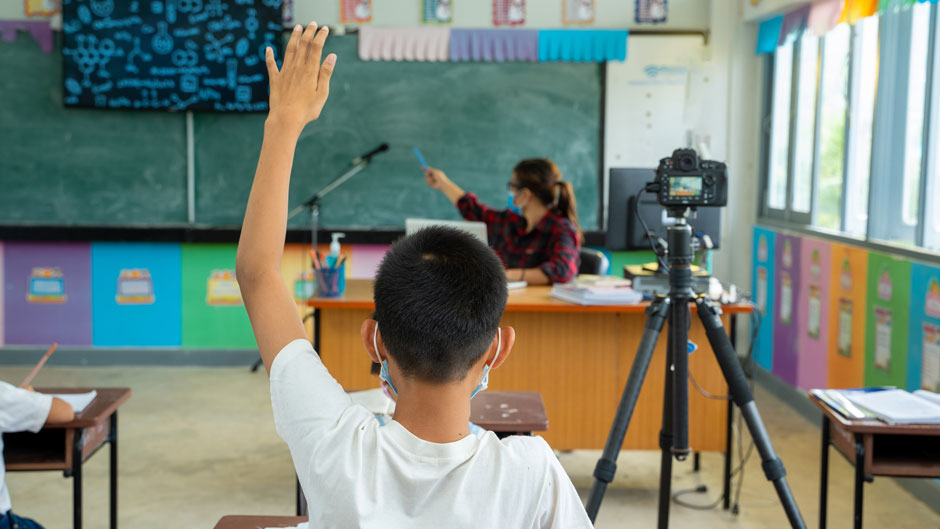The COVID-19 pandemic has altered almost every aspect of people’s lives. Education is not an exception. The number of teacher vacancies nationwide has grown. Teacher shortages are not new, but the pandemic has exacerbated the demand for educators and other school personnel.
“The shortage of qualified, well-trained teachers was already critical prior to the pandemic and COVID has only exacerbated the problem,” said Laura Kohn-Wood, dean of the University of Miami School of Education and Human Development.
“When will we collectively recognize that recruiting the best and the brightest, increasing compensation that is commensurate to the difficulty and importance of the job, and demonstrating the value of education through recognition and support of teachers will benefit the entire country?” she asked.
There are people wanting to contribute and have a positive impact on our children, said Mary Avalos, a research professor in the Department of Teaching and Learning at the School of Education and Human Development.
“Our system is pushing them away,” she said.
Low salaries, a lack of respect as professionals, and limited autonomy in instructional decisions have played a major role in the teacher shortage, said Avalos. The pandemic has been an added punch that has thrown the educational system into a tailspin.
“Getting people to come work in our schools has been even more difficult since COVID-19,” Avalos added.
While the stress of teaching during the pandemic has triggered more retirements and resignations, a survey by the National Education Association (NEA) reported that 32 percent of their members planned to leave the profession earlier. “The fact that teachers are paid as much as 20 percent less than other college-educated workers with similar experience is a huge obstacle to recruiting first-rate educators,” the NEA stated in a report.
The Florida Education Association has said that there are 5,000 teacher positions open in the state. Added to that are shortages of bus drivers, custodians, paraprofessionals, teachers’ assistants, and substitute teachers.
The impact of the shortage on working teachers has been enormous, said Avalos. Many teachers have said they are teaching classes that they are not certified to teach or taking students from other classes where there is no teacher because there are no substitutes available, according to Avalos.
The year of the lockdown because of the pandemic—which forced students and teachers to work remotely—meant that many students’ learning outcomes suffered, Avalos noted. According to teachers Avalos spoke with, some students never logged in or adapted to remote learning.
Teachers also had to adjust to remote instruction on a new technological platform; and in many cases, this required extra hours of preparation to ready lessons to be taught via a computer.
“Teachers figuring out how to engage students when they are little boxes on a screen is very different than when they are physically present in the room with them,” said Jennifer Krawec, clinical assistant professor and associate chair in the Department of Teaching and Learning.
Teachers also had to be witness to the challenges that many students faced in getting internet access to join the classroom instruction.
“In the classroom, the pandemic highlighted and exacerbated the inequities that already exist,” said Krawec. Some students had no laptops, others had no access to Wi-Fi and others had no adult to supervise their work, since many parents were front-line workers who continued to work during the lockdown, she reported.
Though most students are back in the classroom, things are not completely back to normal.
In Florida, the debate about whether students should or should not wear masks in schools has added an extra layer of stress to educators and parents, Avalos indicated.
“Across the board, people are experiencing a lot of stress, and it is played out in ways that are not good for public education,” said Avalos. Florida Gov. Ron DeSantis issued an order that gave parents the choice of whether to send children to schools with masks. Many teachers, other workers, and students have been exposed to the virus, which has forced some of them to quarantine. This has added to the lack of teachers, Avalos pointed out.
“We may be coming out of the pandemic but not so in schools because of ‘learning lags.,’ ” said Avalos. “And also some people are being quarantined because they are exposed to COVID-19 in schools, resulting in more absences.”
In Florida, she added, there have been teacher shortages in several areas for many years, including special education. The pandemic has aggravated the problem. It is an area that requires teachers with a particular set of skills and a “big heart.”
Wendy Morrison Cavendish, a professor at the School of Education and Human Development with experience in special education, said the teacher shortage is also affected by the “deprofessionalization” of the profession.
“The shift to standardized approaches to teaching that limit teacher’s creativity through the use of pacing guides and standard curriculum modules plays a factor,” said Morrison Cavendish.
The shortage in the special education area is also affected by the state’s accountability practices that tie back to school rankings and teacher evaluations, according to Morrison Cavendish.
“For teachers of students served in special education, standardized testing is an area of challenge,” she said. “For many students with disabilities, alternative assessments are allowed for only 1 percent of the student population.”
Krawec said that she believes the one major incentive to attract teachers to the classroom is better compensation. A starting salary for a new teacher in Miami Dade County is about $41,000, according to the Bureau of Labor Statistics.
“Many teachers in Miami have two or three jobs in order to live and work here,” said Krawec. “Teaching is a really challenging job and it is a commitment. If we value education and the role that teachers play, then we should compensate them accordingly.”

